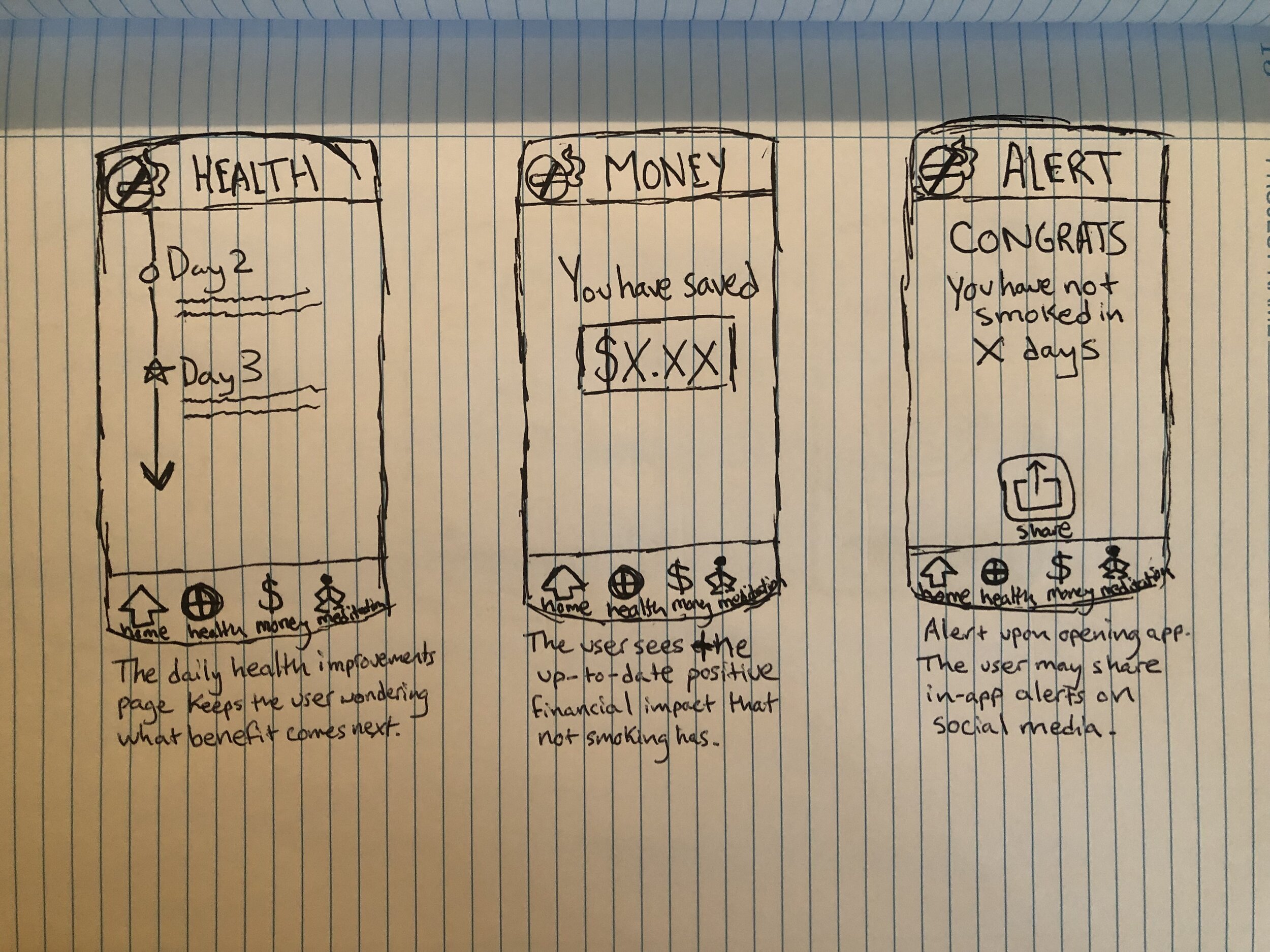Extinguish
Smoking cessation is a rough personal journey that should not be hindered by poor design. A round of directed storytelling research with smokers uncovered a need for an app that supports the user's journey with positive reinforcement, a desire to revisit the app, and a lack of out-of-app alerts that trigger an urge to smoke. So let us give it to them. This is my journey, from concept to testable prototype results, to do just that.
Tools: Sketch, Axure, Keynote, and Zoom.
Methods: Directed storytelling, research report, sketched and digitized wireframing, think-aloud testing, architecture diagram, and interactive prototyping.
Deliverables: Interactive prototype, architecture diagram, think-aloud testing, and findings report.

Interactive Prototyping
Wireframes were generated based on initial research and turned into low-fidelity prototypes in Sketch. Next, it was crucial to establish an IA that was as intuitive as possible to facilitate ease of navigation.
The app includes an engaging variety of positive reinforcement sections, including health benefits, money saved, and in-app alerts that are sharable on social media. These sections update daily to entice the user into returning to the app for more positive feedback.
The only alerts that the app uses are internal to avoid reminding smokers that they are quitting when they are unprepared to cope with the subject.
High-fidelity pages for the app were designed in Sketch and brought into Axure to establish interactivity and complete the testable prototype.
User Testing
Four participants tested the prototype over Zoom and in-person to study how they would navigate with no direction, gauge usability while participants completed a task of moderate difficulty, and document the emotional impact on the user. A think-aloud testing method was used to elicit the necessary data.
One hundred percent of the participants completed the assigned task with no difficulty. The emotion invoked from the app was described as "calming" by all participants. Navigation was smooth and uncomplicated by any errors.
Although accompanied by many positives, the research revealed that certain pages could use more explicit explanations to eliminate confusion and that the alert page needed to be repositioned in the IA to increase discoverability.
Conclusions
Remaining faithful to what the research demanded, the app exclusively utilized positive reinforcement, contained incentives to return, did not require out-of-app alerts, and was received well by users. Quitting smoking is hard, but we can make that leap just a little easier with intelligent UX design.




